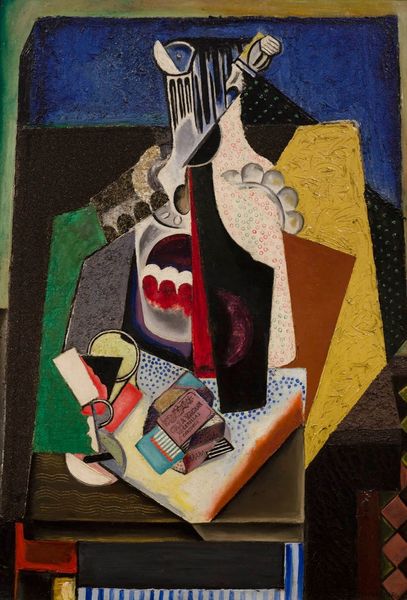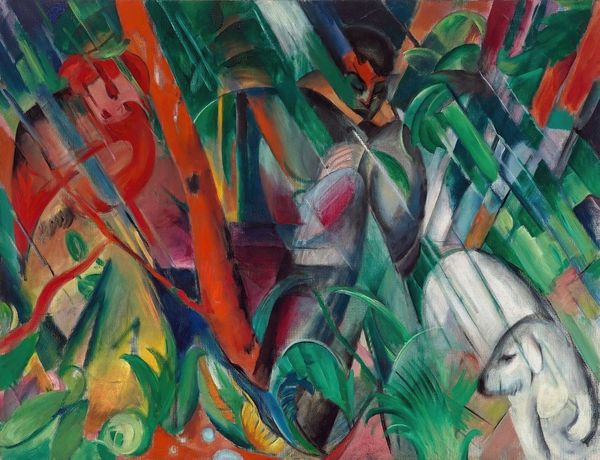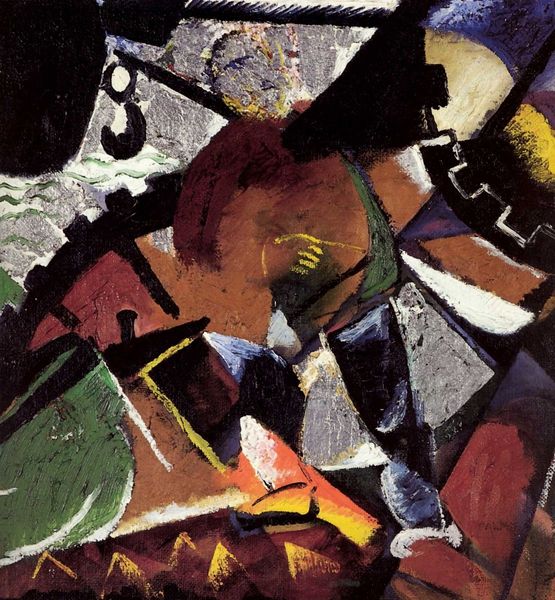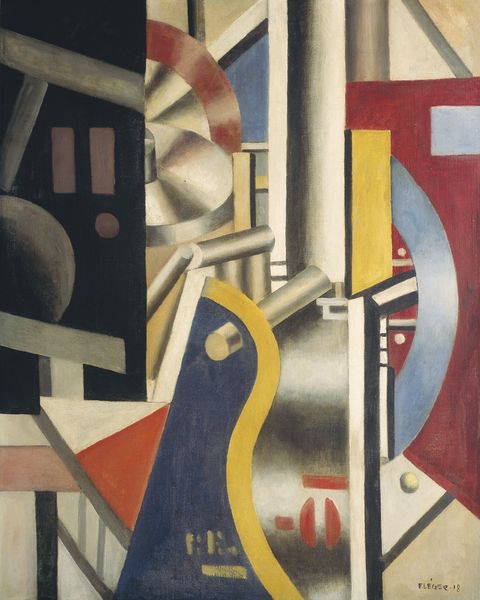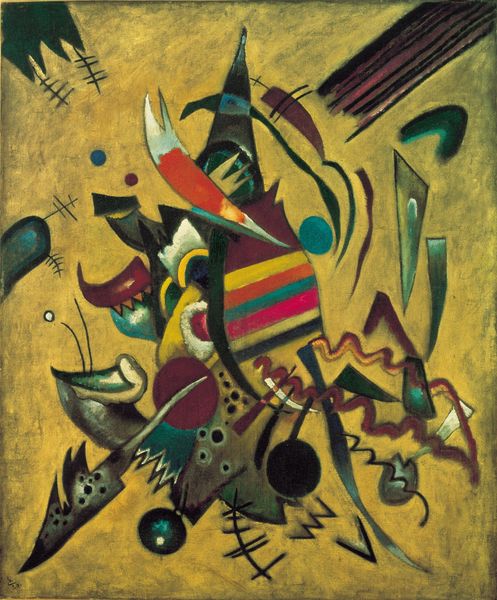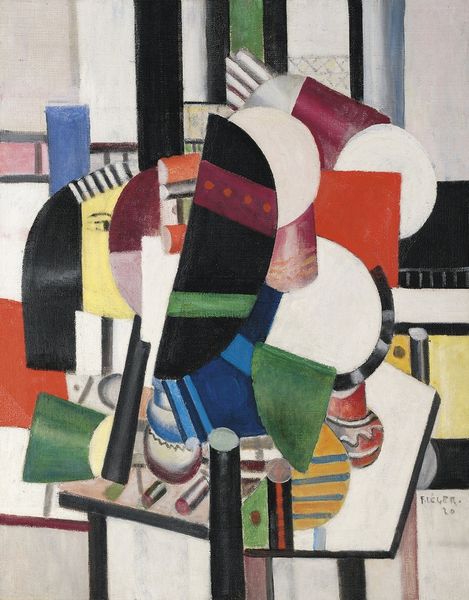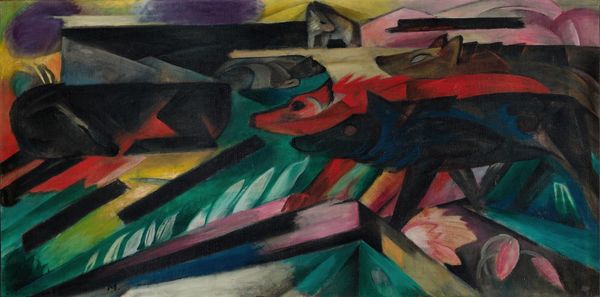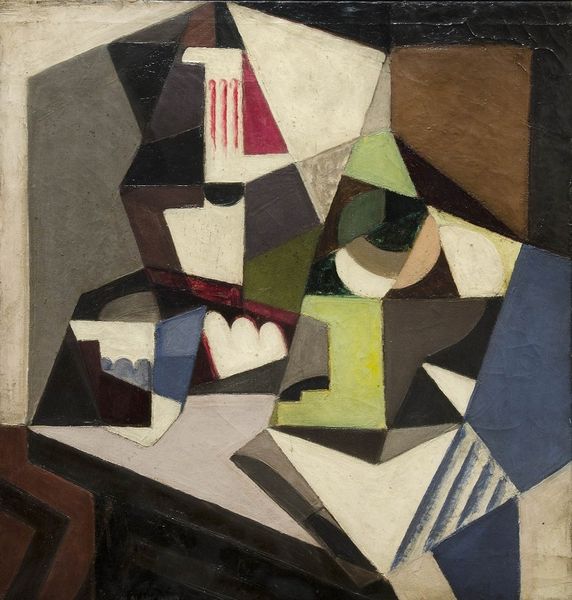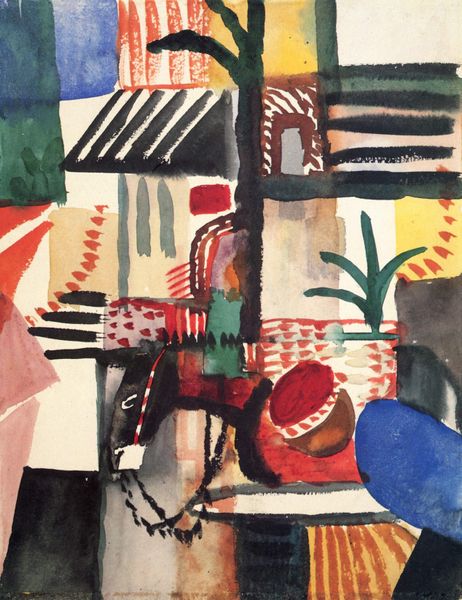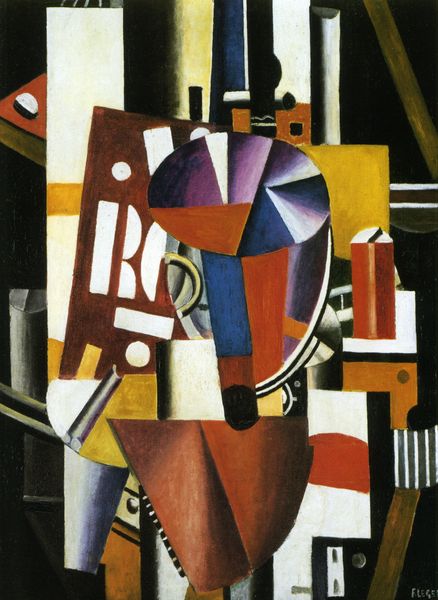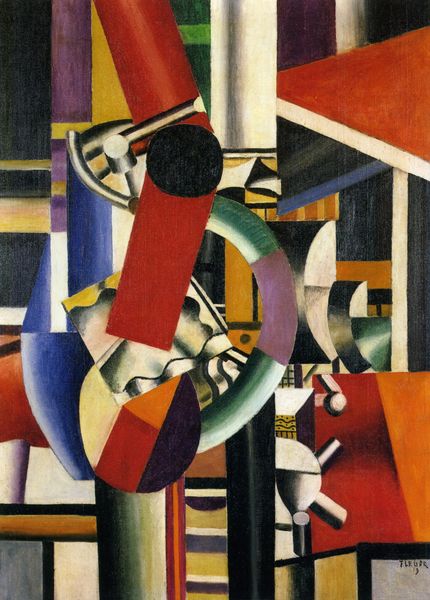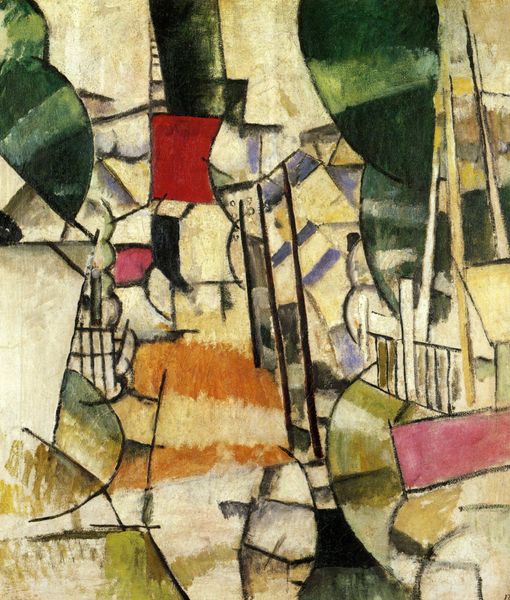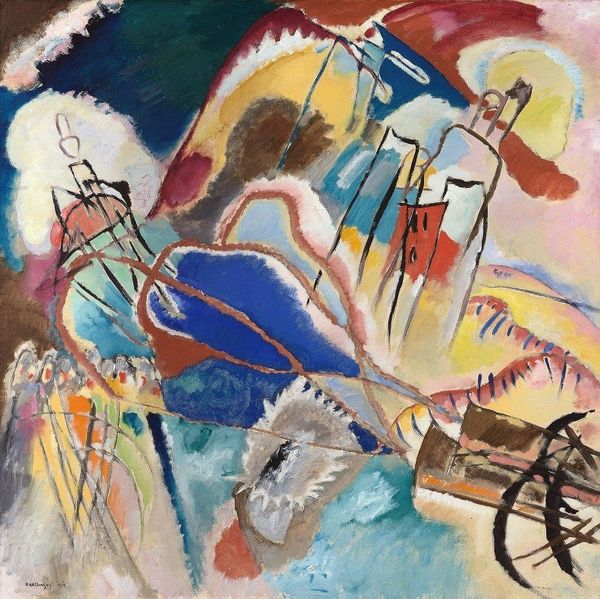
oil-paint
#
cubism
#
art-nouveau
#
oil-paint
#
oil painting
#
abstraction
Copyright: Public domain
Curator: Well, that’s certainly… busy. All those shapes colliding—it's a bit overwhelming at first glance. Editor: Indeed! Let me introduce Amadeo de Souza-Cardoso's "Coty," crafted in 1917. It's an oil painting showcasing his unique blend of Cubist and Art Nouveau styles. It’s more than just the eye can immediately grasp, though; look deeper, what do you feel? Curator: It feels… disjointed. Almost like shattered glass reassembled, but not quite fitting together. The human form is fragmented, interspersed with objects – is that a playing card and a rose, perhaps? And why "Coty"? Is that the fragrance maker’s label on the bottom left? The overt commercial product next to the nude feels jarring. Editor: Precisely! Coty’s branding woven into the composition implicates us within the commodification of beauty. Souza-Cardoso seems to blur the boundaries between the "high" art of painting and the everyday consumer experience, inviting commentary on the art market and consumerist desire through the symbolism within the imagery. Curator: I can see that. It prompts thoughts about how industry shapes desire, not just visually in advertising but within fine art too. However, even setting that interpretation aside, the color choices – that bold juxtaposition of primaries with earthier tones – they give the painting a distinctive emotional charge. There is also such a tension between abstraction and figuration; does it reflect the tensions in Portuguese society, teetering between tradition and modernization in a nation still committed to a monarchy amid republican fervor elsewhere in Europe? Editor: Good observation. I see it as more that the Cubist language emphasizes the flatness of the canvas, pushing against traditional notions of perspective and representation and how the artist might see beauty, literally pulling these concepts apart. It mirrors Souza-Cardoso’s engagement with European avant-garde movements, yet always reflecting it through his cultural lens. It begs the question—was Souza-Cardoso working in response to commercial consumption or a broader social movement that has found an individual voice within the language of early modernist painting? Curator: Perhaps it is a convergence of the two. In all, the artwork offers us a kaleidoscopic insight into that moment in time, from the factory production line to artistic license in its final form. Editor: Yes, certainly an era ripe with societal, philosophical, and art movement transformations captured vividly.
Comments
No comments
Be the first to comment and join the conversation on the ultimate creative platform.
